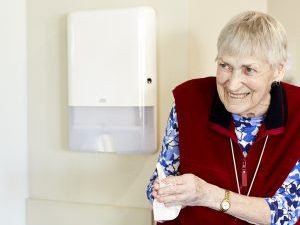
A well-targeted, skills-focused migration program is one of several policies in a government white paper designed to address critical labour shortages in sectors such as aged care.
Released on Monday by Federal Treasurer Jim Chalmers, the white paper – Working Future – is, in part, a roadmap to future-proofing Australia’s aged care system and ensuring there are enough workers to care for Australia’s ageing population.
The paper “is all about helping more Australians make the most of the big changes underway in our economy and our society as well,” said Chalmers at a launch event.
At 264-pages, the document builds on the outcomes of last year’s Jobs and Skills Summit and has been informed by input from 400 stakeholders in every state and territory.
Among the policies addressing aged care is a call for targeted migration. “Well-designed migration settings can complement the domestic workforce in the care sector,” say the paper’s authors.
In response, provider peak – the Aged & Community Care Providers Association – praised the move.
“We welcomed the white paper’s acknowledgement that well-targeted migration can complement local skills,” said ACCPA chief executive officer Tom Symondson. “We agree that this is an important part of the solution to the challenges we face.”
Migrants already make up a large proportion of the residential aged care workforce, easily outnumbering Australian-born workers.
To ease sector access to migrant workers, the paper’s authors point to the establishment of the Aged Care Industry Labour Agreement, which streamlines the recruitment of qualified direct care workers from overseas to work in aged care.
The agreement enables aged care providers to sponsor overseas workers through the introduction of new classes of visas.
“We welcome moves already in place to bolster the aged care workforce, including a 15 per cent pay rise for aged care workers and the introduction of skilled workers visas,” said Symondson.
Another measure contained in the paper to further boost the aged care workforce is to permanently allow aged care pensioners and veterans to earn $4,000 more a year before they are financially penalised.
“We know that many older Australians have decades of experience in caring and we want to remove disincentives to keep them engaged in the workforce,” said Symondson.
“It makes sense that older Australians who still want to work should be encouraged to do so. Age should not be a barrier continuing to work and contribute to the care economy.”
The pension policy was strongly advocated for by National Seniors Australia.
“National Seniors welcomes the permanent increase in the work bonus from $7,800 to $11,800,” said chief advocate Ian Henschke.
“It shows the government is listening, but it must go further.”
Also contained in the white paper, the government’s intention to progress a National Skills Passport designed to more easily connect employers with workers with the skills and qualifications they need.
“We encourage any efforts to streamline the employment process and cut down on red tape,” said Mr Symondson. “It gives aged care providers more time caring for older Australians and less time doing paperwork.”
The white paper also contains a call for policymakers to think of Australia’s care workforce – including those working in disability, home care and residential aged care – as a complete entity.
“These different parts of the care sector often demand the same skills and can compete for the same workers,” note the paper’s authors.
“To ensure different parts of the care sector can grow together, the government must be careful to consider the care workforce as a whole when setting policy, to ensure best use of the available workforce.”
They add: “When care is delivered more efficiently, it expands the service capacity of the available workforce … In aged care, effective home care services can be a high productivity approach to delivering care, as living independently for longer can result in lower labour requirements and lower costs than residential aged care, as well as greater benefits to patients.”
The authors also highlight opportunities to improve the delivery of care “through regulatory harmonisation, especially in barriers to moving between different parts of the care system.”
As an example, the authors point to the different worker screening processes across sectors and states, which makes it “difficult for workers to work across different sectors including aged care, disability support and veterans’ care.”
As well, the paper’s authors point to the high prevalence of casual workers and multiple job holders in the aged care sector. This, they say, “adds complexity to skills shortages and has implications for delivering quality care.”
As the authors note: aged care workers are nearly twice as likely as other workers to hold multiple jobs. “This can limit job security for some workers who would prefer more stable work, and has flow-on impacts for attraction and retention in the sector.”
To tackle the issue, the government is “preferencing direct employment in aged care and will examine the drivers of insecure work and other aspects of job design and use stewardship levers to incentivise more secure and fairly paid jobs for workers.”
According to the Committee for Economic Development of Australia, unless urgent action is taken, it’s projected that over the next decade the aged care sector will need at least 110,000 more direct care workers in the system.
“Short and long-term solutions are needed to address the projected shortfall,” said Symondson.
“Australia’s aged care sector is crying out for workers, so we support any policy moves to help alleviate the problem.
”Also acknowledging the care workforce shortfall, Henschke said older Australians deserve to know someone is going to be there for them, at a time when they need it most. “If the carers aren’t there, the care isn’t there.”
This article was first published by Australian Ageing Agenda. Read the original article here.
Comment below to have your say on this story.
If you have a news story or tip-off, get in touch at info@incleanmag.com.au
Sign up to INCLEAN’s newsletter.



